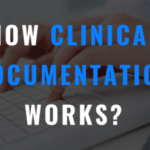On June 11, 2018, the Centers for Disease Control and Prevention (CDC) released the FY 2019 ICD-10-CM code changes. There are 473 code changes, including 279 new codes, 143 revised codes, and 51 deactivated codes. These codes are to be used from October 1, 2018 through September 30, 2019.
The total number of ICD-10-PCS codes for this current year is 78,705 and for 2019 the total will be 78,881. There will be 392 new codes; eight revision titles; and 216 deleted codes for FY 2019.
What is included in the 2019 ICD-10-CM code changes?
A go-to code for an infected surgical wound, T81.4xxA, is among the 51 codes that are set to be deleted. Instead, coders will have 15 additional codes added to an expanded T81.4- subcategory that will allow for more accurate reporting of the depth of the infection.
For example, coders will have the ability to specify whether the surgical wound infection is affecting the superficial incision surgical site (T81.41-), the deep incision surgical site (T81.42-), or the organ and space surgical site (T81.43-). Other surgical site and unspecified options will also be available (T81.49- and T81.40-). Each of these codes requires a seventh character: “A,” “D,” or “S.”
New codes T81.41-, T81.42- and T81.43- will receive additional inclusion terms to help guide coders to the appropriate code choice. “Subcutaneous abscess following a procedure” and “Stitch abscess following a procedure” will be placed at T81.41-.
“Intra-muscular abscess following a procedure” will be added to T81.42- while “Intra-abdominal abscess following a procedure” and “Subphrenic abscess following a procedure” will be placed at T81.43-.
Three new codes have been included in the 2019 ICD-10-CM to uniquely capture postprocedural sepsis, T81.44- (Sepsis following a procedure), with seventh character options “A,” “D,” or “S.” Additionally, the tabular instruction to “Use Additional code to identify the sepsis” will be added to the new postprocedural sepsis code T81.44.
Impact of FY 2019 Changes
The additions of new approaches, sites and tables will provide advantages to all involved in the coding process. It is time-consuming and frustrating when trying to assign a code and there is no option, such as a missing table. Along with the advantages of new codes comes the challenges for all Healthcare entities.
All coding professionals must keep current on all these coding and guideline changes. When assigning ICD-10-PCS codes, it is important to understand not only the new code, but information on new procedures/techniques.
It is important that all coding professionals to review the changes to the 2019 ICD-10-CM to ensure they do not experience rejected claims and a potential loss to cash flow
For more information or to discuss implications for your organization, please contact us


